Do you have a question about the Toyota TC 2006 and is the answer not in the manual?
Explains safety and vehicle damage warnings and their visual representation.
Describes the meaning of the universal safety symbol used in the manual.
Details the function and importance of seat belts and airbags for occupant safety.
Describes the master and sub keys, their functions, and limitations.
Describes the process of locking and unlocking vehicle doors using the remote control.
Details seat adjustment and safety precautions for driver and passengers.
Emphasizes the importance of proper seat belt usage for all occupants to prevent injury in accidents.
Details the function and safety precautions related to the driver and front passenger SRS airbags.
Describes the function and safety precautions for side and curtain shield airbags.
Emphasizes the legal requirement and safety benefits of using appropriate child restraint systems.
Details how to adjust the tilt angle of the steering wheel.
Explains how to adjust the outside mirrors for proper visibility.
Describes how to use the switches to adjust the power rear view mirrors.
Explains how to adjust the inside rear view mirror for day and night driving.
Briefly mentions the use of vanity mirrors located in the sun visors.
Details the operation of headlights, including high and low beams, and turn signal functions.
Explains how to activate and deactivate the emergency hazard lights.
Covers the operation of the windshield wipers and washer system.
Describes how to read the fuel gauge and the low fuel level warning light.
Explains how to read the engine coolant temperature gauge and overheating indications.
Lists various warning lights and buzzers and their corresponding actions.
Explains the driver's seat belt reminder system and its alerts.
Describes the front passenger's seat belt reminder light and factors affecting its activation.
Details the function of the engine oil replacement reminder light and how to reset it.
Explains the malfunction indicator lamp and what to do if it stays on.
Explains the low engine oil pressure warning light and immediate actions to take.
Details the ABS warning light, its function, and malfunction indications.
Describes the SRS warning light and its indications for airbag system operation and malfunctions.
Explains the low tire pressure warning light, its causes, and how to reset the system.
Details the different positions of the ignition switch and their functions.
Explains the automatic transmission selector lever positions and driving modes.
Describes the manual transmission shift pattern and clutch operation.
Explains the function of the tire pressure warning system.
Details how to set and release the parking brake.
Explains how to operate the cruise control system.
Identifies and describes the function of each control for the air conditioning system.
Illustrates the different air flow patterns available from the climate control vents.
Provides useful tips for operating the air conditioning system efficiently.
Details how to set and reset the digital clock.
Explains how to view the outside temperature.
Describes the steering wheel controls for operating the audio system.
Details how to open and lock the glove box.
Details how to open and close the luggage storage box.
Provides tips for the initial break-in period.
Details fuel type, octane rating, and unleaded gasoline requirements.
Details the vehicle's tandem master cylinder brake system.
Provides information on tire symbols, sizes, and identification numbers.
Outlines total load capacity, seating capacity, and towing capacity.
Provides precautions for safely stowing cargo and luggage.
Discusses the characteristics of summer and all-season tires.
Lists essential checks to perform before starting the vehicle.
Provides step-by-step instructions for starting the engine.
Offers advice for driving safely in diverse conditions.
Provides guidance on preparing the vehicle for winter driving.
Explains procedures and precautions for dinghy towing.
Advises against trailer towing.
Offers tips for improving fuel economy and extending vehicle lifespan.
Provides troubleshooting steps for when the vehicle fails to start.
Describes how to start an engine that may be flooded.
Details immediate actions to take if the engine stalls while driving.
Outlines the procedure to follow if the vehicle's engine overheats.
Provides step-by-step instructions for changing a flat tire.
Offers safety advice for jacking up the vehicle and changing a wheel.
Details the specifications, usage, and limitations of the compact spare tire.
Explains how to use the shift lock override button.
Advises on procedures for lost keys.
Details common causes of corrosion and provides preventative measures.
Explains how to wash the vehicle properly.
Offers guidance on cleaning the vehicle's interior surfaces.
Details the vehicle's design for reduced maintenance and owner responsibility.
Lists day-to-day care practices essential for proper vehicle operation.
Provides clues that indicate when the vehicle may need service or repair.
Introduces the section on DIY maintenance.
Identifies and illustrates the location of key components within the engine compartment.
Shows the location of the fuse boxes.
Provides essential safety precautions for DIY maintenance.
Lists the necessary parts and tools for basic DIY maintenance.
Details the correct procedure for positioning the jack.
Covers essential checks for engine and chassis components.
Guides on how to check the engine oil level.
Explains how to check the coolant level.
Details how to check the brake fluid level.
Provides instructions on how to check tire inflation pressure.
Guides on checking tire tread wear and replacing tires.
Explains the importance of tire rotation.
Provides guidelines for installing snow tires and chains.
Details the procedure for replacing wheels.
Covers checks and procedures for battery, fuses, and lights.
Provides precautions for working with the vehicle battery.
Details critical precautions for recharging the battery safely.
Guides on checking and replacing fuses.
Provides instructions and safety precautions for replacing light bulbs.
Lists the key dimensions and weight specifications of the vehicle.
Provides technical specifications for the vehicle's engine.
Details the recommended fuel type and capacity.
Lists essential service specifications for engine, cooling, and fluid systems.
Provides information on tire sizes and inflation pressures.
Lists the location and amperage rating of various fuses.
Details how to contact NHTSA and Scion regarding potential vehicle safety defects.
| Brand | Toyota |
|---|---|
| Model | TC 2006 |
| Category | Automobile |
| Language | English |



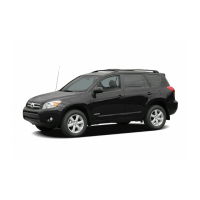




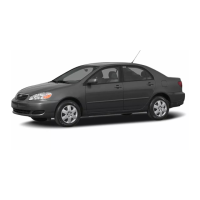
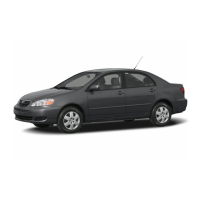
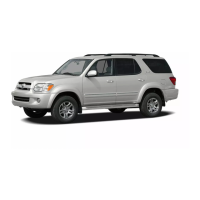
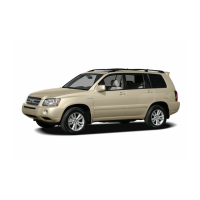
